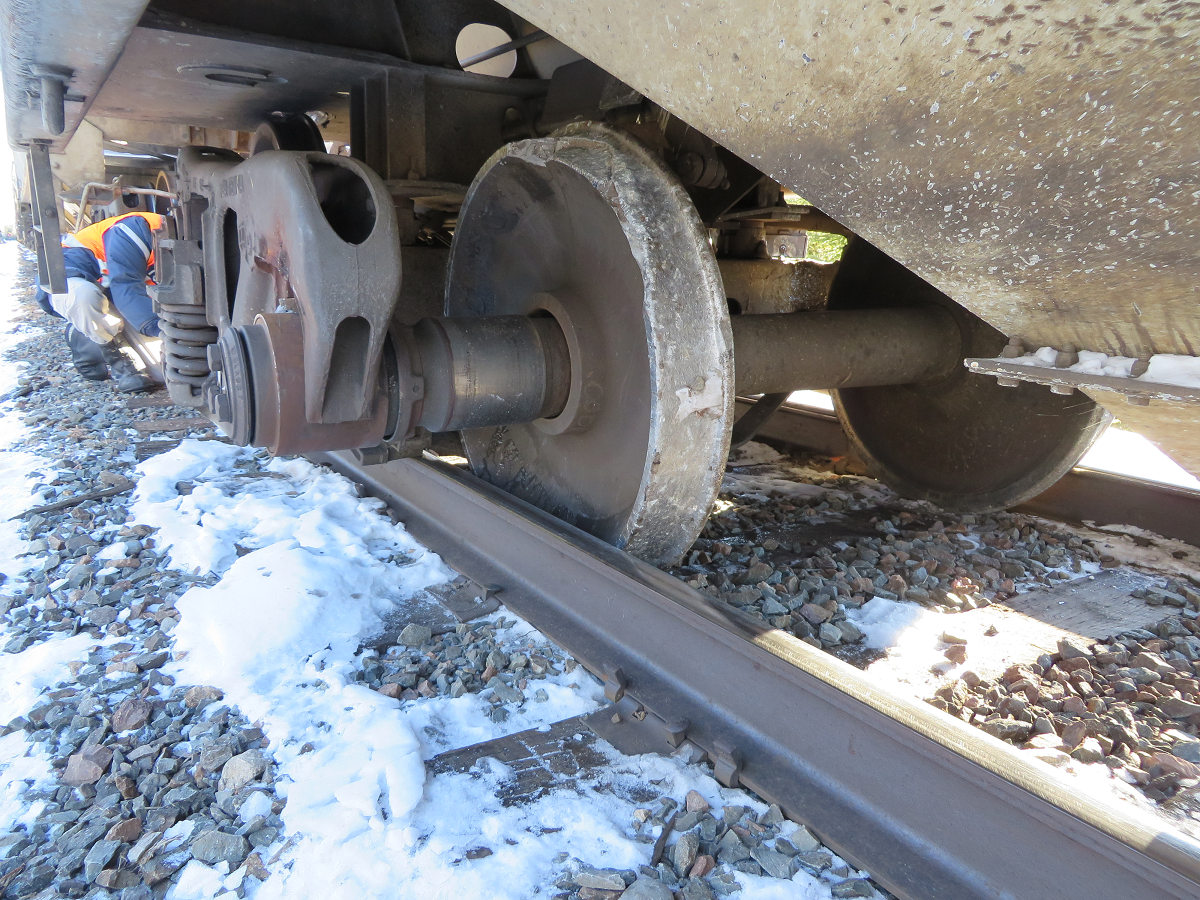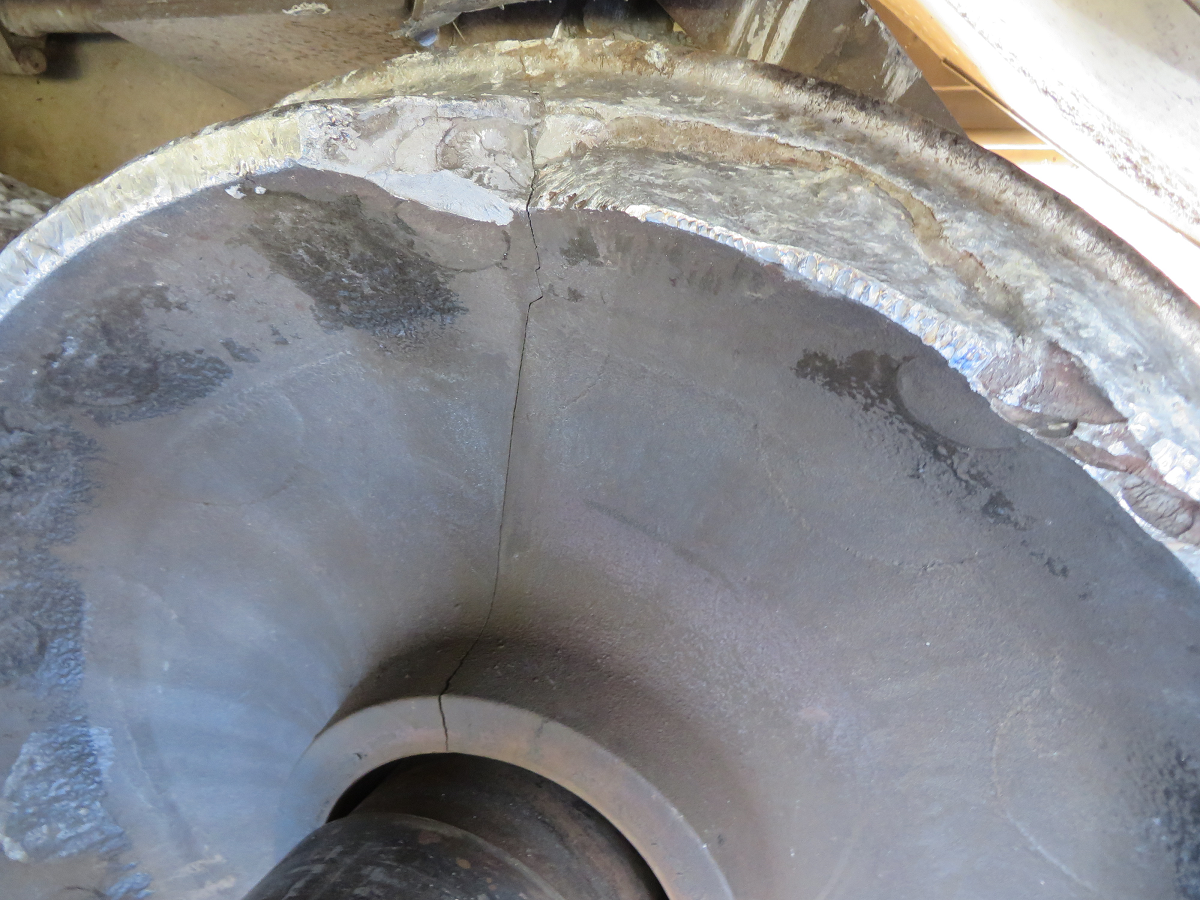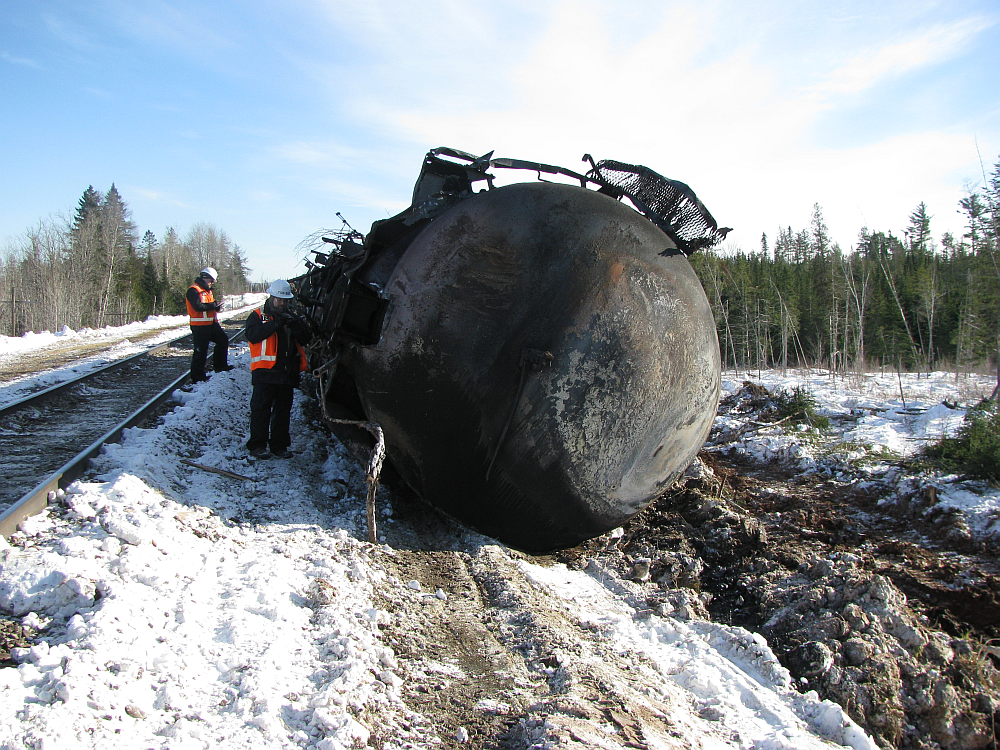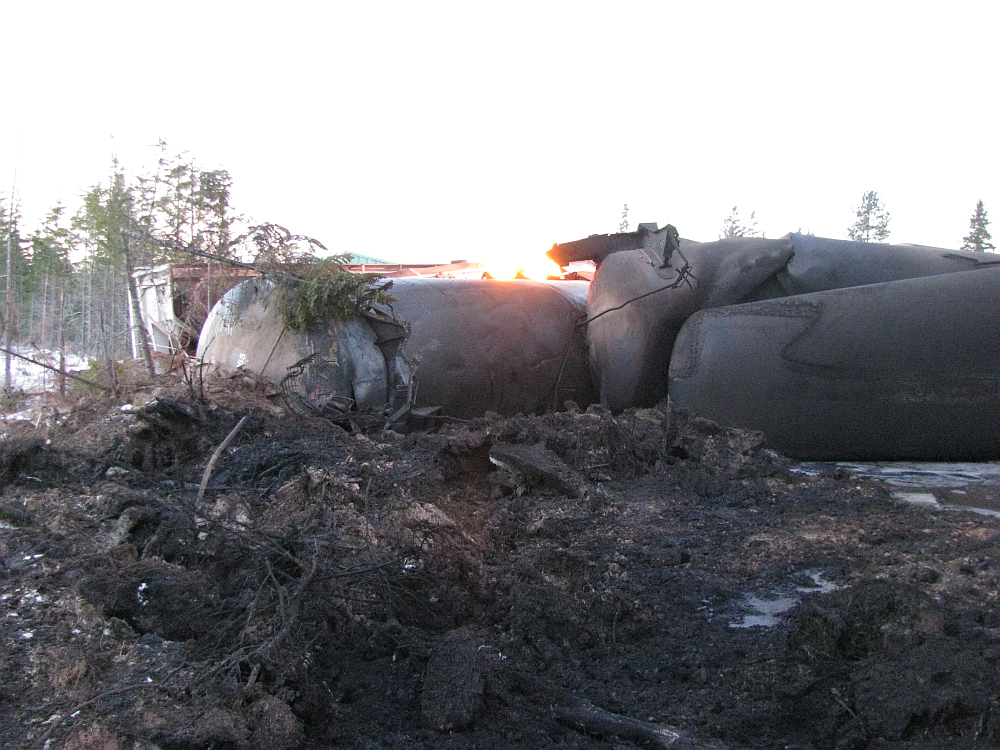Main-track derailment
Canadian National
Freight train M30831-06
Mile 152.60, Napadogan Subdivision
Plaster Rock, New Brunswick
The occurrence
On , at approximately 1847 Atlantic Standard Time, Canadian National Railway Company (CN) freight train M30831-06 was proceeding eastward when it derailed 19 cars and 1 distributed power locomotive on the Napadogan Subdivision, near Plaster Rock, New Brunswick. The distributed power locomotive and most of the derailed cars piled up at Mile 152.60. About 230 000 litres of hydrocarbons spilled from the tank cars and caught fire. Approximately 150 residents were evacuated within a 1.6-kilometre radius. A total of about 350 feet of railway track was destroyed. There were no injuries.
Media materials
News release
Investigation progress update: Derailment of Canadian National freight train at Plaster Rock, New Brunswick, 7 January 2014
Read the news release
Deployment notice
TSB deploys a team to the site of a CN train derailment near Plaster Rock, New Brunswick
The Transportation Safety Board of Canada (TSB) is deploying a team to the site of a CN train derailment near Plaster Rock, New Brunswick. The TSB will gather information and assess the occurrence.
Investigation information
Download high-resolution photos from the TSB Flickr page.
Class of investigation
This is a class 3 investigation. These investigations analyze a small number of safety issues, and may result in recommendations. Class 3 investigations are generally completed within 450 days. For more information, see the Policy on Occurrence Classification.
TSB investigation process
There are 3 phases to a TSB investigation
- Field phase: a team of investigators examines the occurrence site and wreckage, interviews witnesses and collects pertinent information.
- Examination and analysis phase: the TSB reviews pertinent records, tests components of the wreckage in the lab, determines the sequence of events and identifies safety deficiencies. When safety deficiencies are suspected or confirmed, the TSB advises the appropriate authority without waiting until publication of the final report.
- Report phase: a confidential draft report is approved by the Board and sent to persons and corporations who are directly concerned by the report. They then have the opportunity to dispute or correct information they believe to be incorrect. The Board considers all representations before approving the final report, which is subsequently released to the public.
For more information, see our Investigation process page.
The TSB is an independent agency that investigates air, marine, pipeline, and rail transportation occurrences. Its sole aim is the advancement of transportation safety. It is not the function of the Board to assign fault or determine civil or criminal liability.



